There are really just 3 ways of powering your guitar pedals: batteries, single power supplies, and then brick power supplies. For years, I used either a battery or a single 9V AC to DC adapter, and I found both of them annoying and inefficient.
I would argue that a single power supply is much better than a battery, but what’s even better than a single adapter is a brick power supply like the MXR Isobrick or Voodoo Labs Pedal Power 3. There are a few reasons for this.
Brick power supplies are better than batteries and single 9V adapters because you can often power over 10 pedals at once with just one power supply. Also, quality power supplies usually deliver isolated power. However, batteries sound better in overdrive, gain, fuzz, wah, and other gain pedals.
Most guitar pedals can use a dedicated power supply, and very few of them are battery-powered only. Although, I’ve read elsewhere that some guitar pedals do rely on only batteries but I’ve never seen such a pedal before. On the other hand, I have seen an adapter-only pedal. Either way, let’s compare and contrast these methods down below.
Batteries Vs Isolated Power Supply [Guitar Pedals]
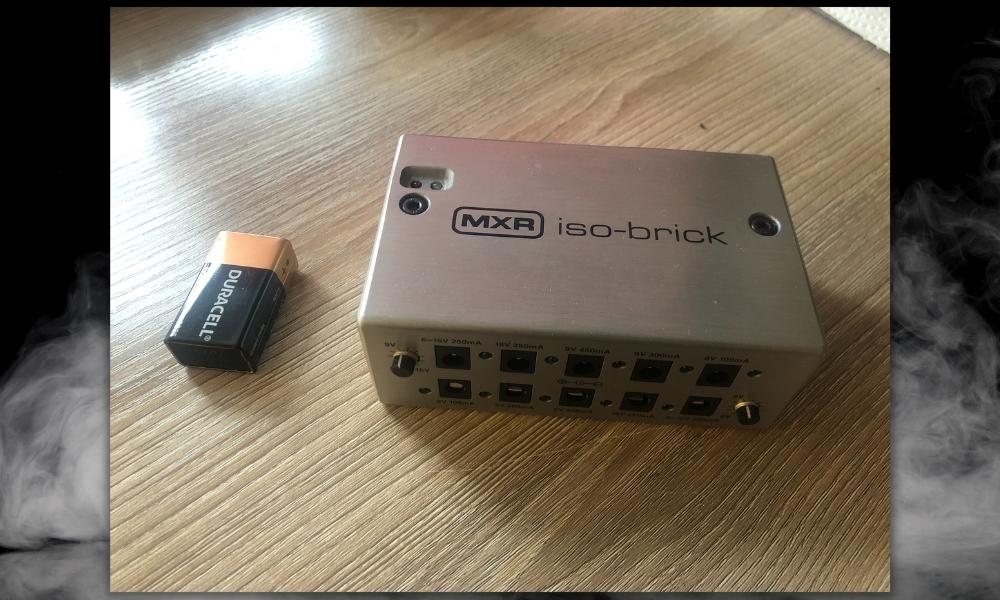
| Power Source | Pros | Cons |
| Batteries | – Best for testing a problematic pedal – Allow you to be more mobile with your pedals – Impervious to power surges and other electrical problems – Relatively inexpensive – Doesn’t take up any space – No cables or wiring to get tangled – Saves room – Can be taken from other electronics – It’s great as a backup – Some players prefer the way their pedals sound with a slightly flat 9V battery – Overdrive, fuzz, gain, wah, and distortion pedals often sound better with 9v batteries compared to a power supply – Battery-operated pedals are quieter because they provide pure DC power that hasn’t been converted from AC (no rectification or switching). | – Doesn’t last long enough (super annoying to replace) – Can get expensive if you have many pedals – Can explode and leak everywhere if left in the pedal (can ruin your pedals) – They’re terrible for the environment – Have to be thrown in the garbage when they’re finished – Not entirely usable in every style of pedal – It’s time-consuming and slightly annoying to replace the battery |
| Standard Power Adapter (9V, 18V, AC, DC) | – Supplies 100% of the power you need – They often come with the pedal free of charge (not always though) – You never have to replace them (unless they break) – No trash – You only need to buy it once | – Takes up far too much space on your outlet (you’ll need a surge protector or an extension cord) – Some of the adapters aren’t meant for particular brands of pedals – It’s easy to confuse different kinds of adapters and mistakenly destroy your pedal (ie, 9V vs 18V or AC versus DC adapter) – It’s susceptible to power surges if you’re not careful |
| Brick Power Supply (Isobrick or Pedal Power 3) | – Takes up way less space in your home – Can supply 100% of the power you need – multiple kinds of power supplies, (9V, 18V, different mA current draws) – Can supply power to nearly every kind of pedal – It’s light-weight and way better for pedalboards – Takes up fewer electrical outlets – No Trash – Only need to buy it once – More power and space to expand on your pedalboard – Supplies isolated power for each pedal – Not as noisy as using several power adapters, but still noisier than using only 9V batteries. – It’s easier to pack for traveling – Lightweight | – It’s susceptible to power surges if you’re not careful – Can be expensive – More valuable and more likely to get stolen at gigs – It’s easy to supply the wrong kind of power to the wrong pedal if you’re not careful – they usually supply only direct current (DC) and not alternating current (AC) |
Why Power Supplies Are Better Than Batteries

This article is just my opinion because I know there are serious advantages of using a battery in your pedal over a power supply. Down below, I’ll explain why I like power supplies more than batteries even though batteries can sound great in certain pedals.
I’m going to use my MXR Isobrick, the various solo adapters I own, and batteries as a frame of comparison. There are other power supply types out there that could omit some of the features I’ve included or include others that aren’t here.
1) You Can Power Almost Any Kind of Pedal (9V or 18V)
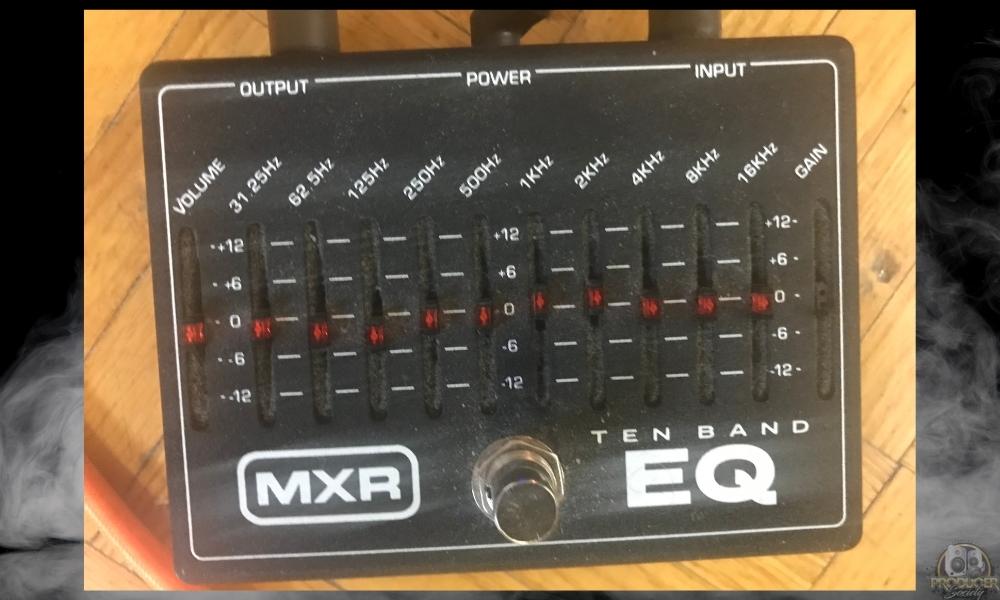
One of the things I like most about the MXR Isobrick is that I can power every single pedal I own except for the Digitech Whammy Pedal which is extremely old and uses alternating current (AC) and not direct current (direct current).
I can use the Isobrick to power my 18V pedals as well as my 9V pedals, which I like a lot. I would hate to have to use a separate adapter for just one pedal.
2) Can Supply Various Current Draw (mA)
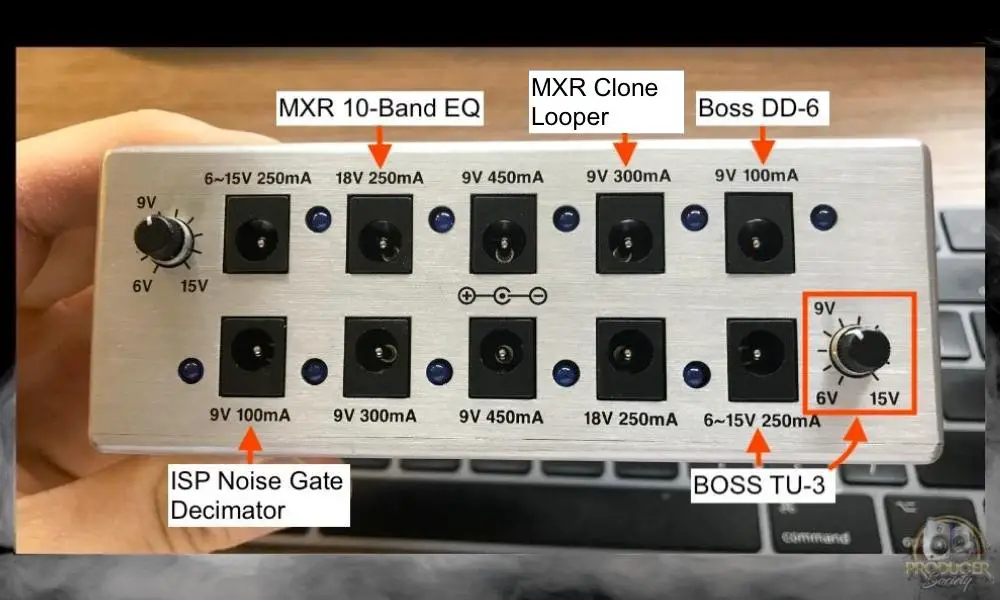
As I said in my tutorial for it, a lot of people are confused by the mA ratings on each port (as I was too if I’m being honest), but they’re there for a good reason. Simply put, some pedals require more power per millisecond than others, while others need more voltage.
For instance, the BOSS RC-5 needs a 170mA power draw, so I use the 9V 300mA for it, while the MXR 10-Band EQ I own needs an 18V adapter so I use the 18V option for it.
Most premium power supplies like this will power the vast majority of pedals you own unless you have a very old pedal or one that’s more niche or specialty than others, ie, the older Digitech Whammy Pedal or a Line 6 POD.
3) Takes Up Less Space On Your Electrical Outlet
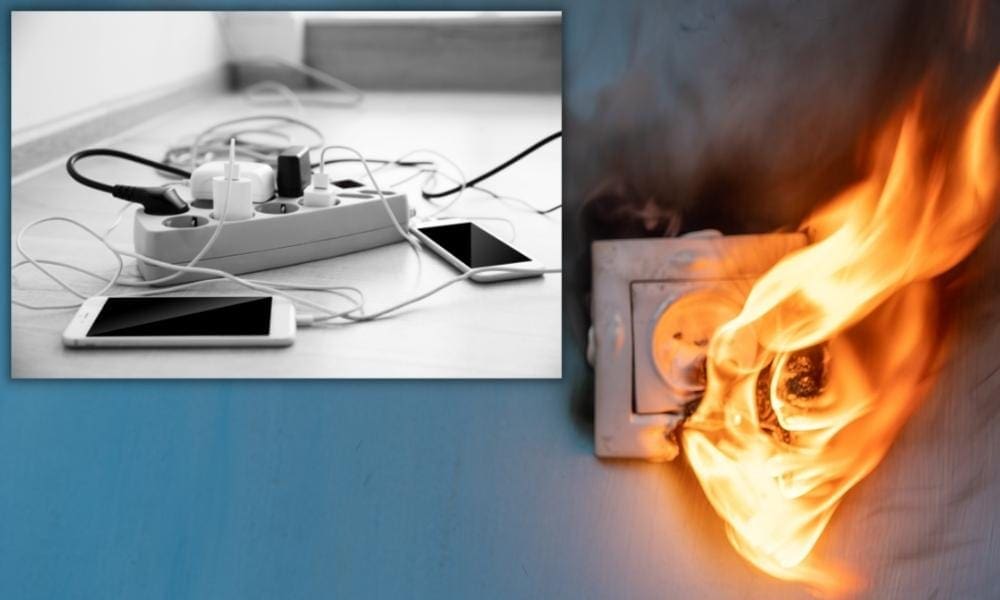
And of course – and really, this should probably be the number one reason – a dedicated brick power supply like the Isobrick/Pedal Power 3 frees up a lot of space that would otherwise be taken up by all of the AC to DC adapters that you own.
It’s not uncommon for pedal manufacturers to include a charger with it, so at the end of the day, you can find yourself with quite a few of them. With the exception of BOSS, I think most pedal companies will give you an adapter with it.
It goes without saying that this will free up a lot of space in your home for other electronics because we all know how many of those we have now.
Between computers, alarm clocks, fans, air conditioners, and phones, we need as many free outlets as we can get.
4) You Never Run Out Of Power
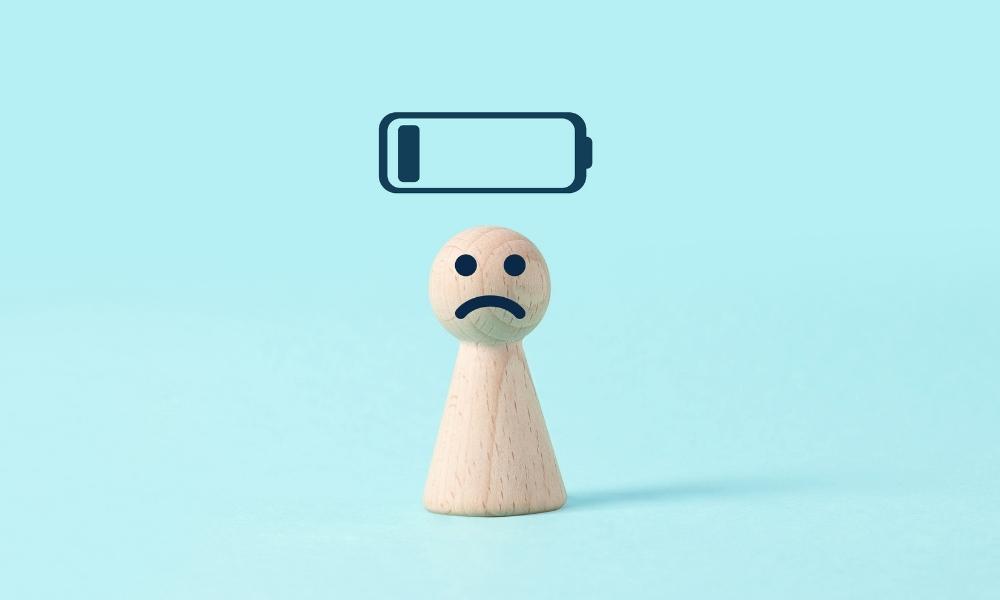
The next big reason why dedicated brick power supplies are way better than batteries is that you never ever run out of power unless you’re cut off from the power company (or suffering through some other troubleshooting issue like a dead cable).
The reliability is there, so you don’t have to worry about your power suddenly giving way as if you were using a battery. This can be a point of concern if you’re constantly using a battery, and not only that, but most pedals simply don’t last with a battery.

As I wrote in my guide on battery longevity in guitar pedals, a standard 9V battery in a pedal with a heavy current draw will simply not last. I wrote in the tutorial that the BOSS RC-5 only lasted about an hour and a half with a 9V battery – not long at all.
The tuner pedal lasted several days because it doesn’t get used that much, but the other ones were all dead within a day or two of constant, daily, use.
5) Easier To Hook Up To A Pedalboard
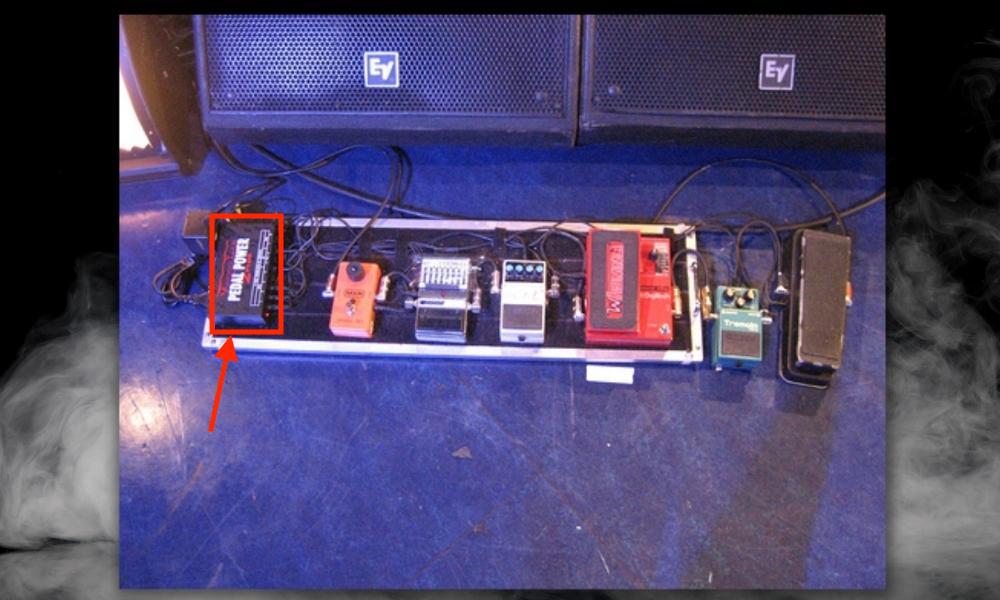
Unless you’re comparing to batteries, brick power supplies are much easier to get set up for one of the reasons I mentioned above – you only need one power outlet. This makes it easier to work with, considering you’re leaving a lot more room on the outlet for others.
In my view, It’s better to nicely consolidate all of your power needs nicely onto one device, rather than spread it out among a bunch of different power supplies.
Batteries are way more convenient because you don’t even need a power outlet, but as I said, they don’t last.
6) No Trash (Much Better for the Environment)

Another reason why power supplies are way better is that you’re not tossing highly toxic and wasteful batteries in the trash all of the time. These are a nightmare if they break open too because of all the chemicals inside of a battery.
I’ve had batteries explode in my devices before, and it does make a mess. I didn’t realize though how toxic the stuff was until someone told me.
From what I understand, batteries are not so great for the environment, and they require special minerals that have to be mined.
7) Only Have To Buy It Once

A quality power supply will last forever. I’m not entirely sure how true this is regarding the LED lights on the MXR Isobrick, but I imagine that due to its super heavy and hefty construction, it’ll last a good long while.
This one kind of relates to the previous point, because no one wants to be buying all of this stuff over and over again, continuously throwing things in the trash.
I used to buy batteries for guitar pedals all of the time, and I’m not sure why. Power supplies are just way better for so many reasons.
8) Provides More Room To Expand On Your Pedalboard
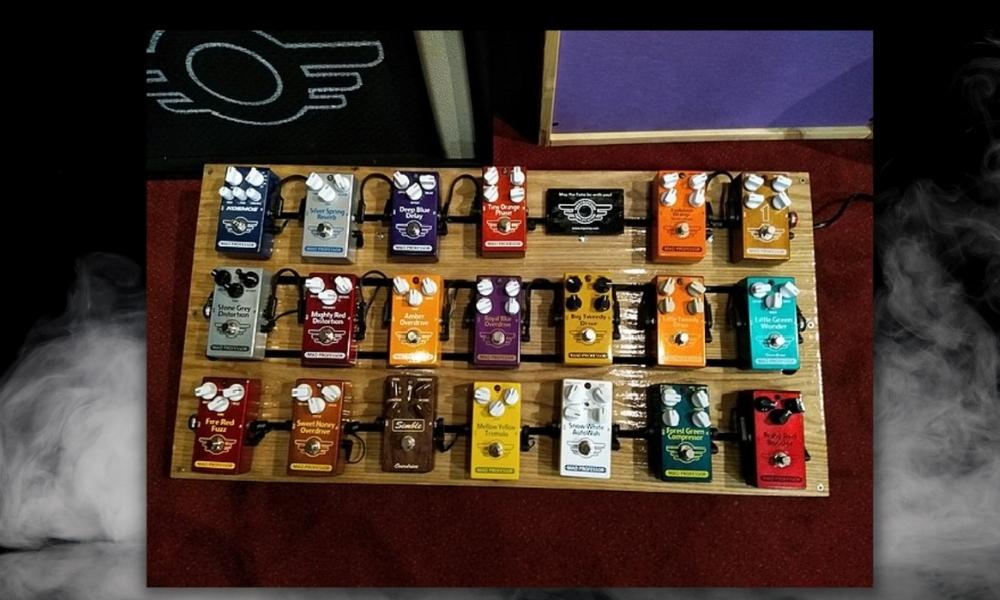
If you’re a guitar pedal fan, time will pass and your pedalboard will undoubtedly expand and grow. And because your pedalboard gets better, so will your power demands.
You don’t want to have to go out of your way and buy a new power adapter every time you get a new pedal. This means you’ll have to find more space on your outlet, or perhaps get a new extension cord altogether.
It’s much better to have all the power needs handled before you even buy the pedal. For instance, because I have my Isobrick, I’ve got room for at least 5 more pedals in my set-up.
From there, I can either use the single adapters that I’ve accumulated over the years, or I can just buy another power supply and stack them together, giving me enough power for 20 pedals.
9) Can Supply Isolated Power to Each Pedal
This one may be a marketing ploy, but apparently, having a dedicated power supply for each pedal ensures you get far less noise. This makes sense to me because if you’ve ever daisy-chained pedals together before, you’ll know they can get noisy.
Daisy-chaining a guitar pedal is a process whereby you use the one single power adapter, meant for just one pedal, to power several others using a special cable like this one. A brick power supply is a nice way to get around having to do this.
A lot of people like to daisy-chain because they run out of room on their power supply, or maybe they just want to save some money and would rather now buy a new adapter like this one.
I prefer not to because I feel like a lot of people run into issues when they do this kind of thing. That said, there is no better option for delivering isolated power than a 9V battery. But they just don’t last.
10) Not As Noisy As Other Power Supplies
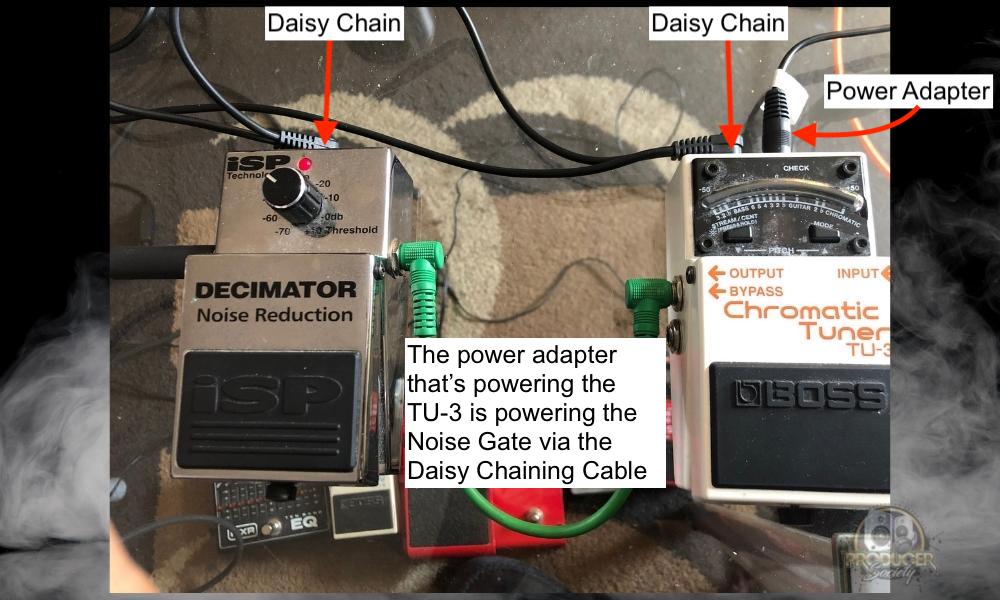
And that brings me to my next point. Once you start dealing with 5 or more pedals, you need to get more meticulous or organized with how you supply power to them.
If you’re daisy-chaining pedals here, using batteries there, and using some other power supply elsewhere, it can get confusing and potentially noisy. Having all of your power come from one place is just a nice way of consolidating everything and keeping it neat.
As I said in my guitar pedal troubleshooting guide, if you find yourself having noise problems, it’s easy to isolate the problem and figure out where your problems are coming from through a process of elimination.
11) Easier to Pack for Traveling

And finally, the most obvious advantage of using a dedicated brick power supply is they’re easier to take with you. Rather than having a box filled with different adapters that have to be appropriately labeled and whatnot, you can just use the one.
It makes your life a lot easier, as I said before, to simply consolidate all of your power in one device, rather than scatter it around to a bunch of different power adapters and batteries.
Additionally, it’s not fun to constantly spend $30-$40 on 9V batteries when you could just buy one power supply and be done with it.
How Are Alkaline & Carbon Batteries Different For Guitar Pedals?
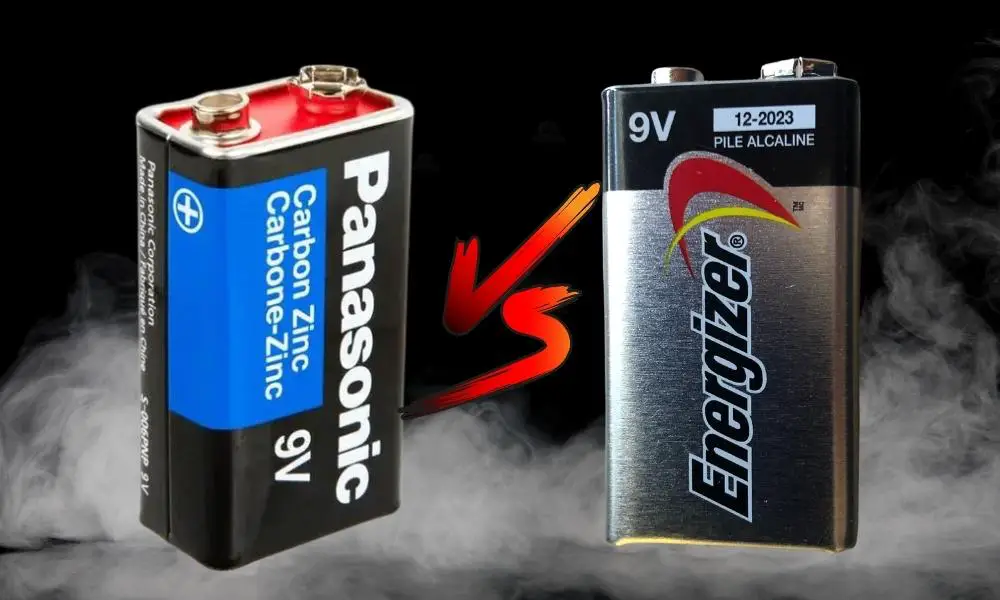
Guitar pedals powered with carbon-based, particularly carbon-zinc, and alkaline batteries do sound different in wah, overdrive, distortion, fuzz, and other boost and gain pedals because of oscillating voltage and current levels.
Carbon-zinc batteries, while they die much faster than alkaline batteries, deliver power in a more unregulated fashion with varying voltage and current. They provide an unequal supply of power and produce much nicer sounds in high-impedance pedals like fuzz pedals as a result.
As I said though, carbon-based batteries last about half as long as an alkaline battery (which is already a very short amount of time).
![Voltage/Time (Carbon, Alkaline, Power Supply) Graph - What Guitar Pedals Sound Better With Dying Batteries? [EASY]](https://travelingguitarist.com/wp-content/uploads/2022/06/VoltageTime-Carbon-Alkaline-Power-Supply-Graph-What-Guitar-Pedals-Sound-Better-With-Dying-Batteries-EASY.jpg)
That said, because of how they sound in fuzz, drive, gain, wah, and distortion pedals, they’re great for a single live show or a recording session.
If you wanted the tone of a carbon-based 9V battery-powered guitar pedal all of the time, it would get costly and probably fairly wasteful too. But it’s not up to me to decide for you. Give a 9V carbon-zinc battery like this one a try and tell me how it goes.
Which Pedals Sound Better With Batteries?
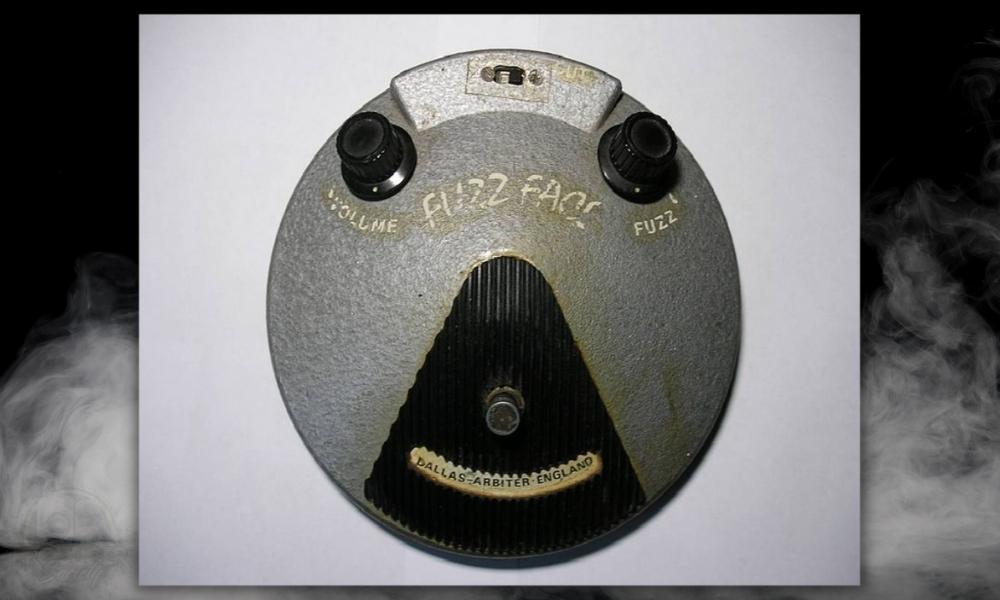
On the MXR Isobrick, for example, there is a knob on the device where you can alternate between 6V and 15V. This is a special power output for pedals that some guitarists believe sounds better when the battery inside of it is dying.
Many players believe certain pedals sound better with batteries for this reason. Overdrive, fuzz, gain, wah, and distortion pedals often sound better with a battery. The Fuzz Face is probably the best example, however, any pedal that uses transistor technology is more likely to be affected by a dying battery.
According to CSGuitars, who makes a great video on the subject, there are other reasons why guitarists like to use batteries, particularly when it comes to using them for studio recording sessions.
The big reason is that using batteries in drive, gain, distortion, and fuzz pedals sounds a lot better to most players. The next reason is that batteries tend to be less noisy because each pedal gets its own DC power supply.
With a 9V battery, there is no stage where you have to convert alternating current to direct current as is the case with a power supply. This means you get truly isolated power that’s purer, for lack of a better word.
How Long Do Batteries Last In Guitar Pedals?
As I wrote in my guide, you can expect a 9v battery to last 2 hours in a guitar pedal with a power draw of 170mA. However, if your guitar pedal only has a 30mA draw, it could last anywhere from 30 to 50 hours.
Are All Guitar Pedals Center Negative?
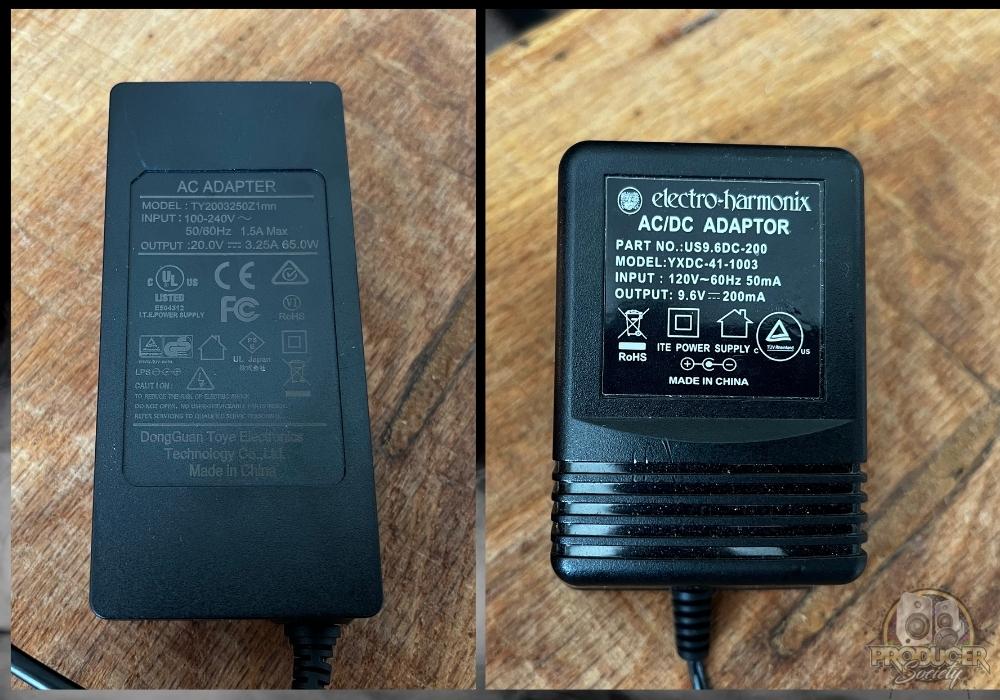
The vast majority of guitar pedals use a center-negative pin, which means the conductor in the center of the pin will have a negative voltage, whereas the positive voltage will be on the sleeve or the exterior conductor (I’ve written more about this in my guide, btw).
Other Articles You May Be Interested In
Important Things to Note About Guitar Pedal Power Supplies
1) There Are More Power Supplies on the Market
For this article, I focused primarily on the MXR Isobrick, mostly because it’s the power supply I own. There are some other great ones to check out and buy though including the Voodoo Labs Pedal Power 3 and the previous iterations and other ones too.
I haven’t tried out the Pedal Power 3 yet, but I know it has great reviews, as it should, considering it’s even more expensive than the MXR Isobrick.


 Written By :
Written By :
